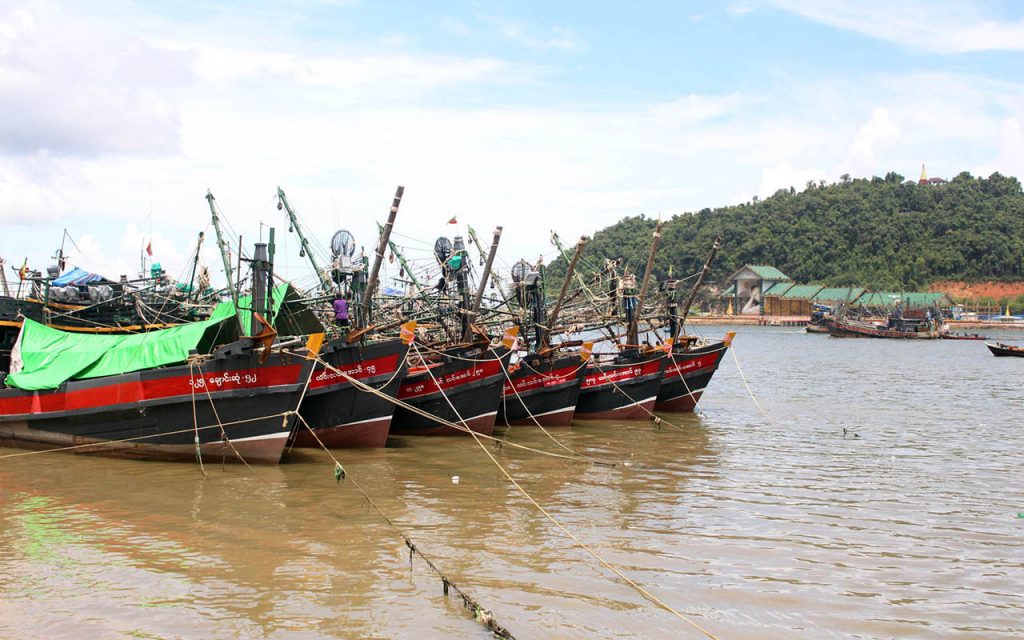The Myanmar Fisheries Department has asked offshores fishing vessels operating in the maritime fishing zone to install vessel monitoring systems (VMS) by 30 October.
Although the no-fishing season ended without vessels installing monitoring systems and the new season has begun from 1 September, the Fisheries Department has allowed fishing vessels to operate and given them two months (1 September to 30 October) to get VMS installed. The move is aimed at improving the livelihood of fishermen and boosting the export sector, said officials.
Fishery companies and owners of fishing vessels have not received the price and information details of the VMS equipment, in spite of a Thai Company introducing VMS machines with videos on 31 August at the Myeik District Fisheries Department, according to officials at the department.
“There are no fishing vessels with VMS machines in Myanmar’s marine fishing area, and the department has already asked them to install the systems by the end of October. The VMS can be installed by the concerned department. Fishermen may face difficulties in terms of increased ice and oil requirements, if they have to return for installing VMS machines,” said U San Maung, the chair of the Myeik District Fisheries Federation.
Located in the southern part of Myanmar, the Taninthayi coastal zone is the longest of the three coastal areas of Myanmar. There are 1,202 offshore fishing vessels and 20,987 offshore fishermen operating in the area, as per records taken in the 2018-2019 fiscal year. Over 600 fishing vessels headed out to sea on 1 September, the start of the fishing season, according to the department.
“As per recent records, no VMS machines have been imported. Once they are brought in, we will check their quality and issue instructions on their installation. We may face difficulties in getting VMS machines installed because we don’t have accurate information about them,” added U San Maung.
The authorities are working to equip all vessels with VMS in order to monitor the movement of offshore fishing vessels, preserve the ecosystem, and conserve marine life in Myanmar’s maritime zone. — Khine Htoo (IPRD)
(Translated by La Wonn)


